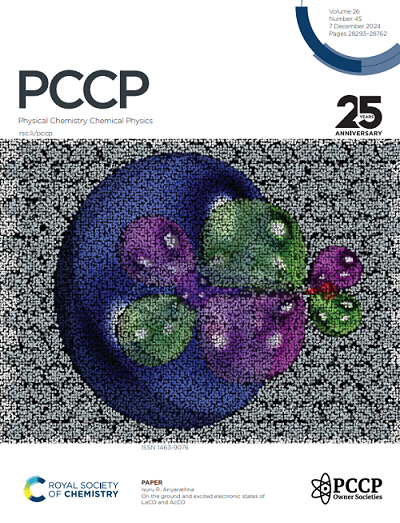Ultrafast pre-solvated dodecane hole capture and subsequent damage of used nuclear fuel extraction ligands DEHBA, DEHiBA, HONTA, CMPO, HEH[EHP] and TBP
IF 2.9
3区 化学
Q3 CHEMISTRY, PHYSICAL
引用次数: 0
Abstract
Two classes of used nuclear fuel (UNF) extraction ligands, amide (DEHBA, DEHiBA, HONTA) and organophosphorus (CMPO, HEH[EHP], TBP), were selected to study radiation induced damage at picosecond to nanosecond timescale using electron pulse radiolysis in n-dodecane (DD) and supported by quantum chemical calculations. Spectra after radiolysis of 200 mM extraction ligands were recorded in DD/0.3 M DCM. Absorption peaks at 365, 365, 400 and 387 nm in case of DEHBA, DEHiBA, HONTA and CMPO respectively are assigned to triplet excited states. Additional absorption peaks at 420, 460 and 600 nm of DEHBA, DEHiBA and HONTA respectively were identified as due to ligand radical cations. A concentration dependent absorption peak at 600 nm in the case of CMPO was observed and assigned due to a combination of CMPO●+, (CMPO)2●+ and possibly a radical degradation product of CMPO. Weak absorption peaks at 650 and 550 nm in case of HEH[EHP] and TBP were observed and tentatively assigned to their radical cations. A two-component DD●+ decay in the presence of ligands was observed due to different ligand oxidation mechanisms: ultrafast capture of pre-solvated DD holes and diffusive capture of solvated DD holes. At high extraction ligand concentrations (> 100 mM), the majority of DDholes were captured via an ultrafast pre-solvated pathway in < 10 ps with C37 values of 389, 401, 270, 374, 458 and 340 mM for DEHBA, DEHiBA, HONTA, CMPO, HEH[EHP] and TBP respectively. Following ultrafast capture, the remainder of DD holes became solvated and were captured with k = (2.32 ± 0.13), (1.78 ± 0.12), (1.38 ± 0.2), (0.98 ± 0.081), (1.09 ± 0.08) and (1.77 ± 0.046) x 1010 for DEHBA, DEHiBA, HONTA, CMPO, HEH[EHP] and TBP respectively. Subsequent hole transfer from the extraction ligands●+ to the low IP solute tri‐p‐tolylamine (TTA) showed only 4-16% hole transfer most likely indicating ligand●+ degradation in 0.9-4.6 ns.求助全文
约1分钟内获得全文
求助全文
来源期刊

Physical Chemistry Chemical Physics
化学-物理:原子、分子和化学物理
CiteScore
5.50
自引率
9.10%
发文量
2675
审稿时长
2.0 months
期刊介绍:
Physical Chemistry Chemical Physics (PCCP) is an international journal co-owned by 19 physical chemistry and physics societies from around the world. This journal publishes original, cutting-edge research in physical chemistry, chemical physics and biophysical chemistry. To be suitable for publication in PCCP, articles must include significant innovation and/or insight into physical chemistry; this is the most important criterion that reviewers and Editors will judge against when evaluating submissions.
The journal has a broad scope and welcomes contributions spanning experiment, theory, computation and data science. Topical coverage includes spectroscopy, dynamics, kinetics, statistical mechanics, thermodynamics, electrochemistry, catalysis, surface science, quantum mechanics, quantum computing and machine learning. Interdisciplinary research areas such as polymers and soft matter, materials, nanoscience, energy, surfaces/interfaces, and biophysical chemistry are welcomed if they demonstrate significant innovation and/or insight into physical chemistry. Joined experimental/theoretical studies are particularly appreciated when complementary and based on up-to-date approaches.
 求助内容:
求助内容: 应助结果提醒方式:
应助结果提醒方式:


